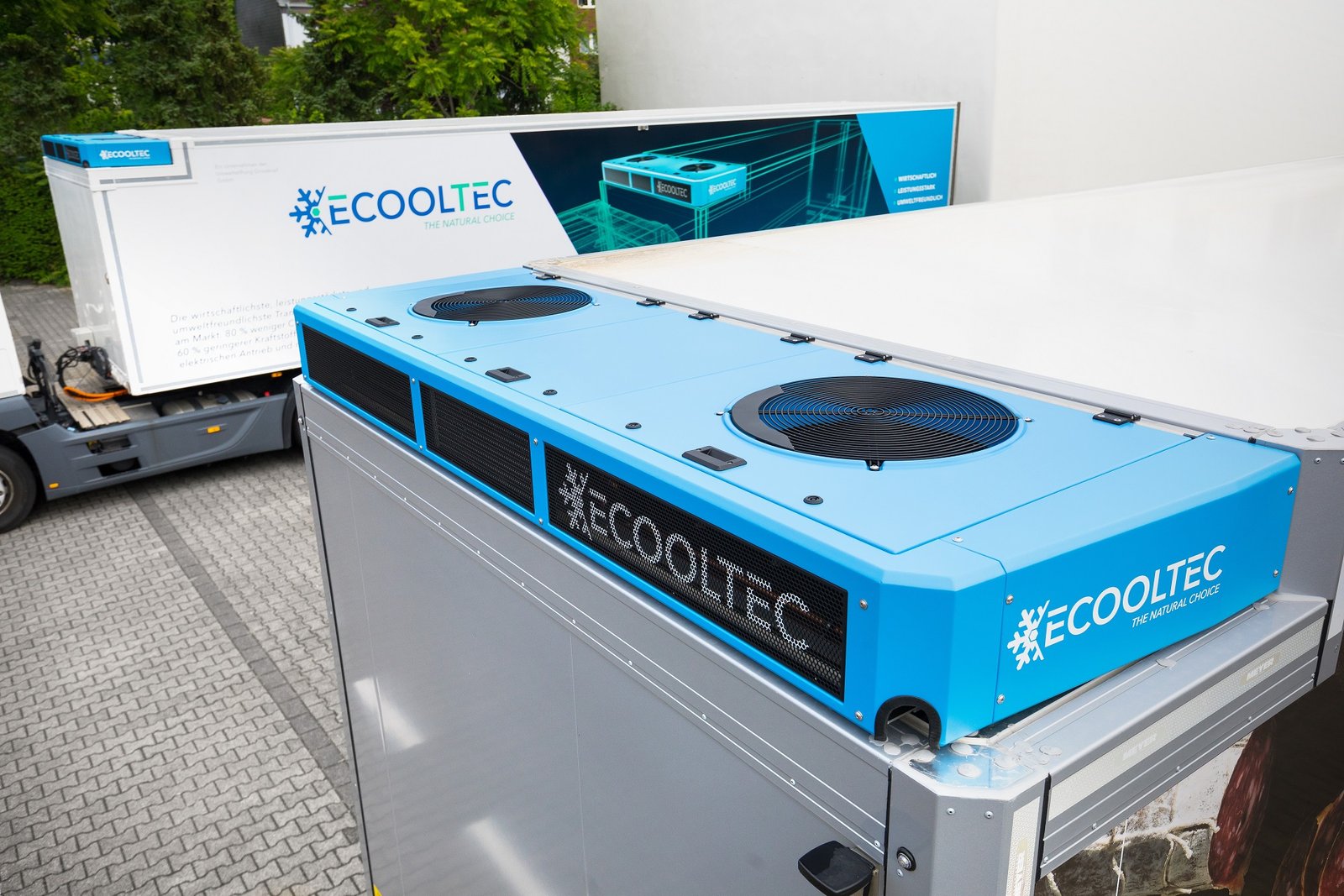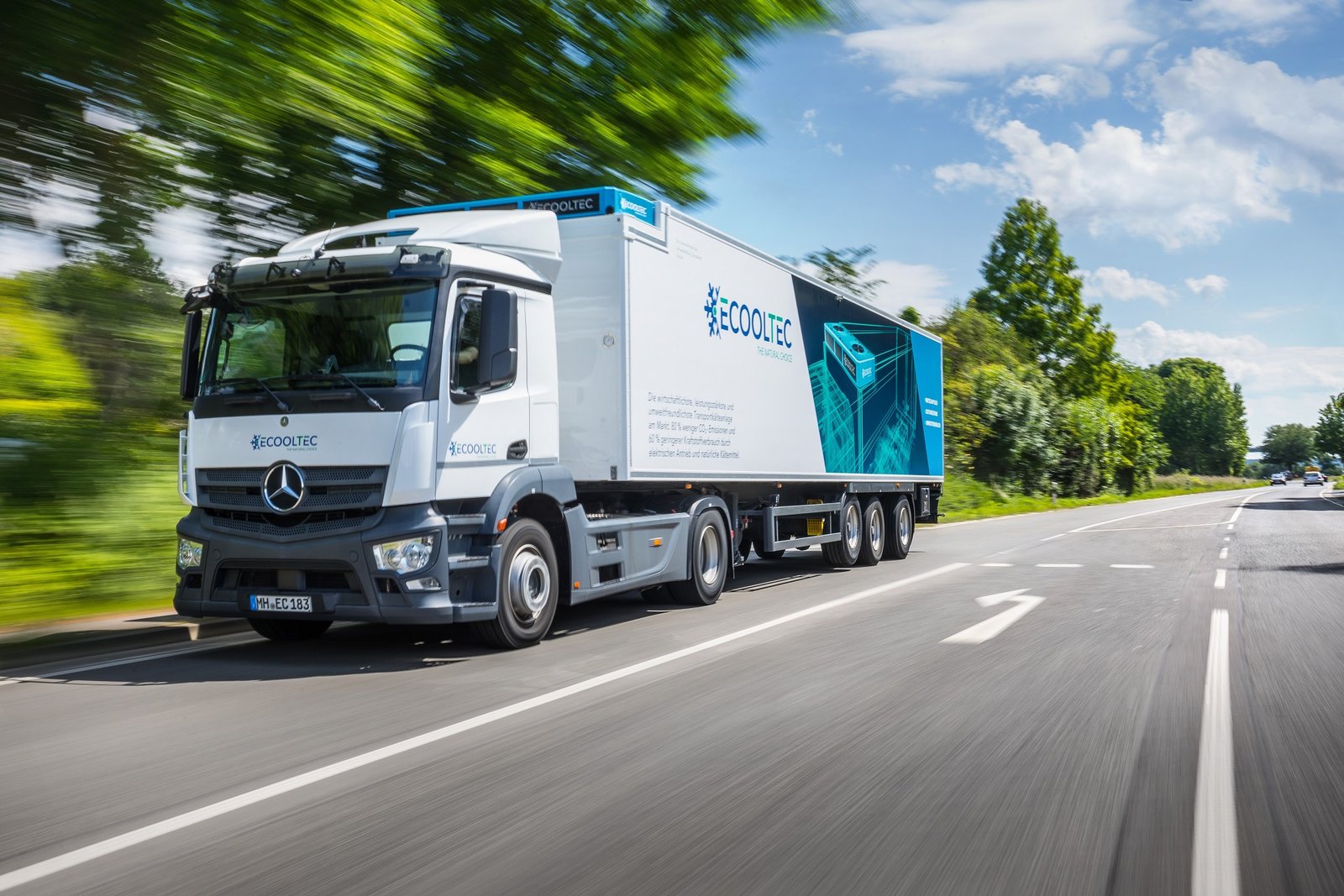The ECOOLTEC TM182 refrigeration unit can be operated electrically from the truck engine via their in-house high-performance alternator, a battery, or a separate power generator, which therefore negates the need for a highly polluting integrated diesel engine. This means that, unlike widely used diesel refrigeration machines, the ECOOLTEC unit produces neither local pollutant nor CO2 emissions when in battery operation, and up to 98 percent fewer emissions via the alternator drive.
Unrivalled low global warming potential with GWP value of less than 3
The technological highlight of the system is the use of sustainable refrigerants. Instead of the fluorinated refrigerants (hydrofluorocarbons) R452A and R410A, which are predominantly used in transport refrigeration and have GWP (Global Warming Potential) values of approximately 2,000; ECOOLTEC relies on natural refrigerants with GWP values of 3 and 1 respectively. The European F-Gas Regulation (EU) No. 517/2014 restricts the use of all fluorinated refrigerants, and in some cases even bans them. This will restrict the operational life of refrigeration systems, especially if refrigerants are no longer available for servicing. Rising prices for F-gases are already and will continue to cause operating costs to rise considerably. ECOOLTEC already uses future-proof natural refrigerants for all its electrically driven transport refrigeration machines. Hydrocarbons are characterised by a high energy efficiency of the refrigeration process and offer good availability at a competitive price.Maximum operational reliability through fully hermetic refrigeration circuits
Important to stress the ECOOLTEC design pays very close attention to maximum operational safety. Since the hydrocarbon-based refrigerant R1270 (propene, GWP: 3) used by ECOOLTEC for refrigeration is flammable, ECOOLTEC has secured the system against leakage into the structure by means of a patentpending, fully hermetic refrigeration circuit and an incredibly small refrigerant charge down by 90 percent when compared with conventional transport refrigeration systems.
The refrigeration process takes place completely outside the cargo hold.
Therefore, the natural, constantly present air flow ensures that in the unlikely event of escaping, propene immediately mixes with the ambient air and evaporates. This prevents the formation of a flammable mixture. In the box body, the natural refrigerant CO2 ensures cold distribution. The R1270 and CO2 circuits flow past each other outside the body via a plate heat exchanger and are thus thermally linked.
